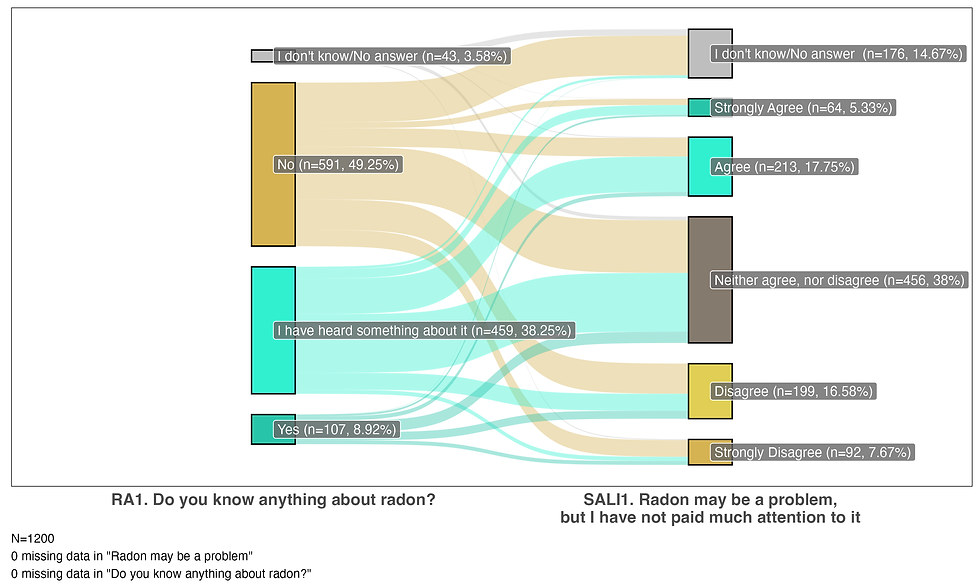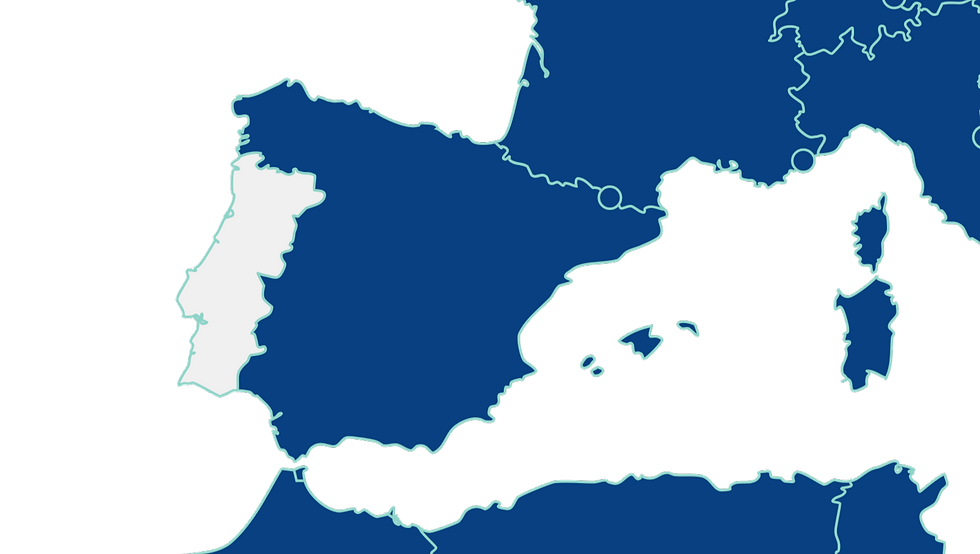
Findings for
Portugal
Cite as:
Perko T. (2025): RadoNorm European Radon Behavioural Atlas: Portugal, H2020 project RadoNorm, No 900009 https://www.radonorm.eu/
Methodology
Computer-Assisted Personal Interviews (CAPI) were conducted in Portugal using the online panel of the marketing research company GfK Metris. A random sampling approach was employed to obtain a sample that was as representative as possible of the adult population (aged 18 and older), considering gender, age, urbanization level, and district. Sampling quotas were informed by expected response rates across socio-demographic groups. When specific groups were underrepresented, additional participants were recruited to meet the predefined quotas, within the constraints of the panel. A weight variable aligned with the quotas is included in the dataset.
A pilot test was conducted with 120 respondents of varying gender, age, and education levels to assess the interview duration and evaluate the CAWI script, allowing for the identification of inconsistencies in responses.
The survey was conducted from April 8 to April 25, 2024. Fieldwork was carried out by GfK Metris (Netques), a company that operates in compliance with the EU General Data Protection Regulation (EU-GDPR) and follows ESOMAR guidelines for market and social research. The final sample consisted of N = 1,200 interviews, with a response rate of 46%.
The questionnaire was jointly developed by the RadoNorm project and the Portuguese Environment Agency (APA). APA was responsible for the translation into Portuguese and also covered the costs associated with data collection and fieldwork. Data analysis was conducted by SCK CEN, Belgium. Data are available at: DOI:10.20348/STOREDB/1179/1306
Download the questionnaire PDF here.
Download the technical report PDF here.
Results
Radon protection behaviour
Do people in Portugal test and mitigate?
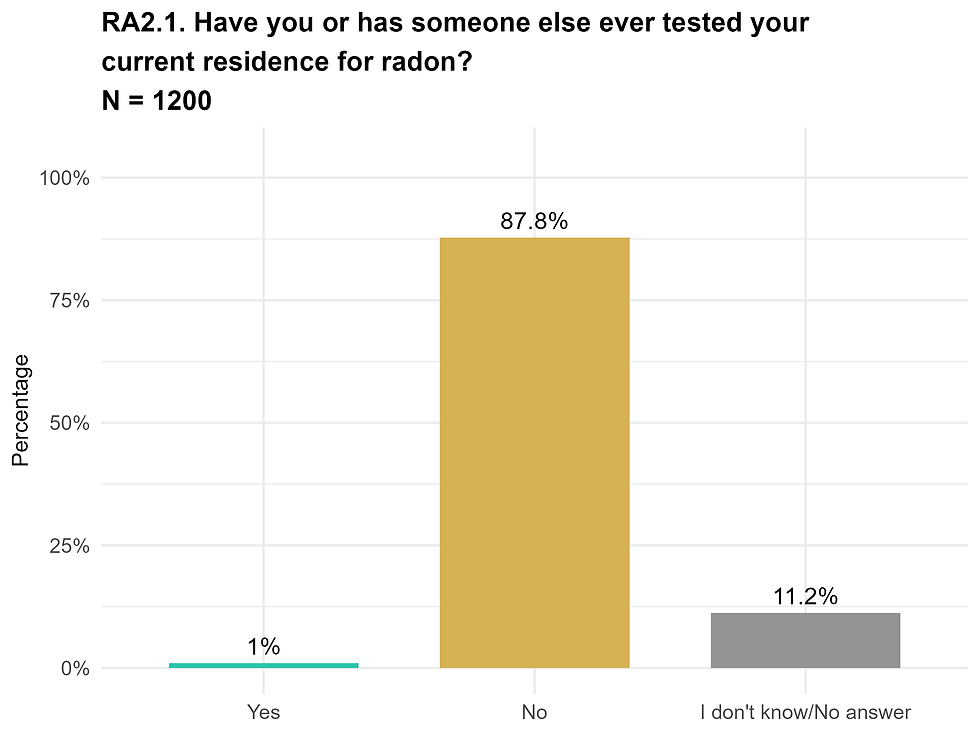
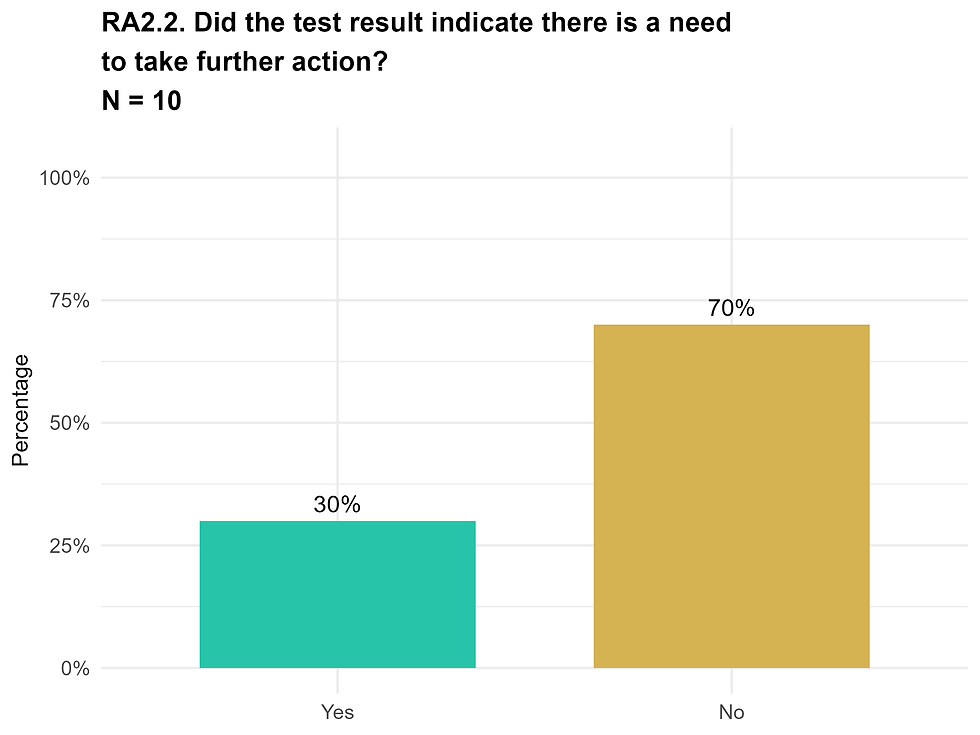


Trustworthiness of radon stakeholders
Who in Portugal is recognized as a trustworthy source of information about radon risks?

Radon awareness
Are people in Portugal aware of radon?

Intention to protect from radon
What is the public willingness to adopt radon protection measures in Portugal?

Radon Knowledge
How much people in Portugal know about radon?


Risk perception
How do people in Portugal perceive radiological, radon and other risks?

Confidence in authorities for risk management
To what extent do the Portuguese have confidence in their authorities' ability to manage risks?

Knowing radon stakeholders
Which stakeholders related to radon are known to the Portuguese?
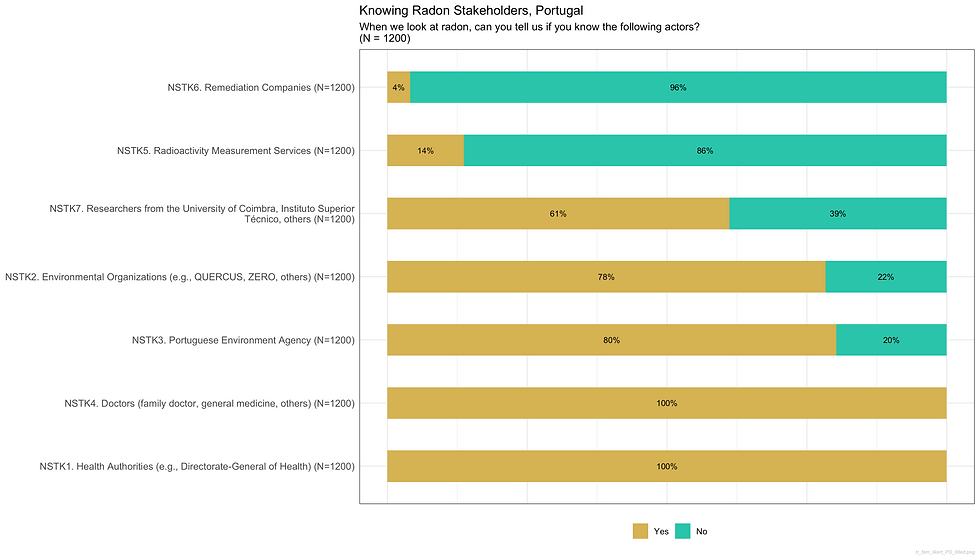
Truthfulness of radon stakeholders
Who in Portugal is recognized as a trustworthy source of information about radon risks?


Which stakeholders involved in radon mitigation in Portugal are recognized as technically competent?
Competence of radon stakeholders
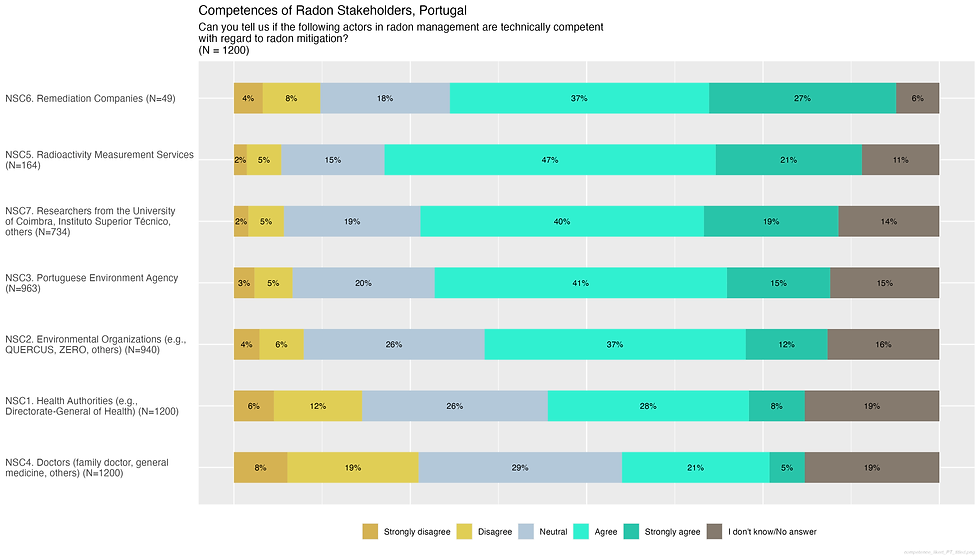

Severity
What are people's beliefs regarding the seriousness of negative consequences due to radon?

Susceptibility
Do people in Portugal believe that radon increases the likelihood of health consequences?

Self-efficacy
Do residents in Portugal have confidence in their own ability to conduct radon testing and mitigation effectively?



Perceived behavioural control: financial and other burden and ease
Is radon testing and mitigation perceived as a financial or other burden?



Aesthetic impact of remediation works on a dwelling
Do residents believe that radon mitigation would visually harm their homes?

Anticipated emotions
What emotions do the Portuguese anticipate feeling if they do not take action against high indoor radon levels?

Social influence
What are the attitudes of respondents regarding social influence?
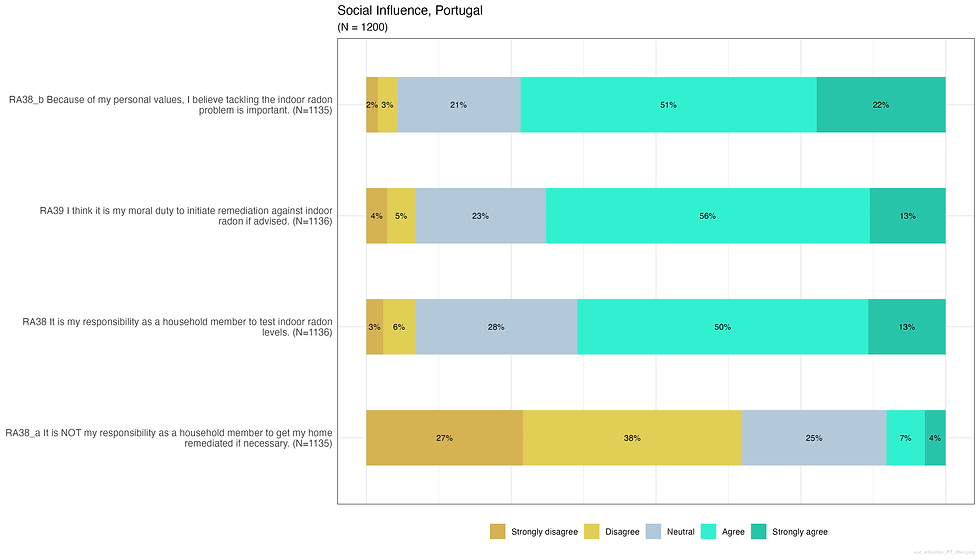
Economic impact of radon on a property value
Does a radon problem in a building negatively impact its financial value?

Moral norms
To what extent do the Portuguese believe it is their moral duty to protect themselves and others from radon exposure?

Moral values
To what extent do people agree with statements reflecting moral values?

Descriptive norms
Is radon testing and mitigation a common practice within social groups?

Subjective norms
Do family members and friends of resopondents care about radon-related issues?




Health effect perception
Do individuals have acquaintances who may have experienced health issues as a result of radon exposure?

Stigma
Is there a risk of stigma associated with radon in dwellings?

Information processing
How do people process information about radon?


Information comprehensiveness
Is there enough information readily accessible?

Information uncertainty
Is there too much uncertainty to make informed decisions?
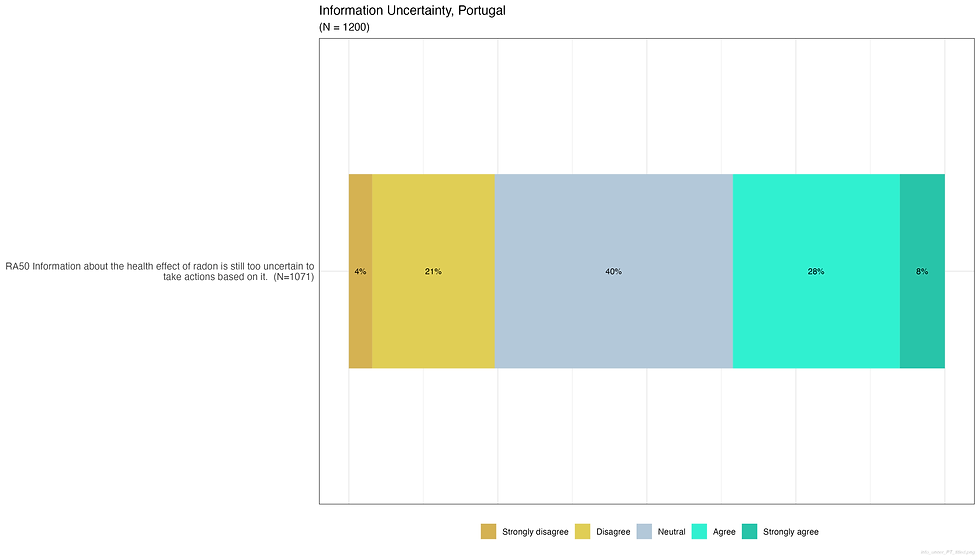
Affective response to information
Does information related to radon elicit negative emotions?
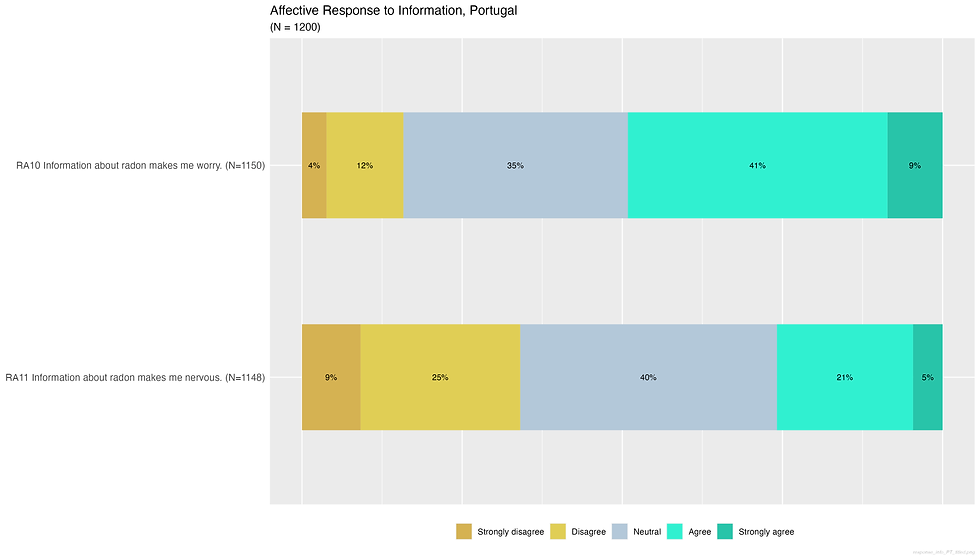
Factors Influencing Behavioural Intention
Radon awareness

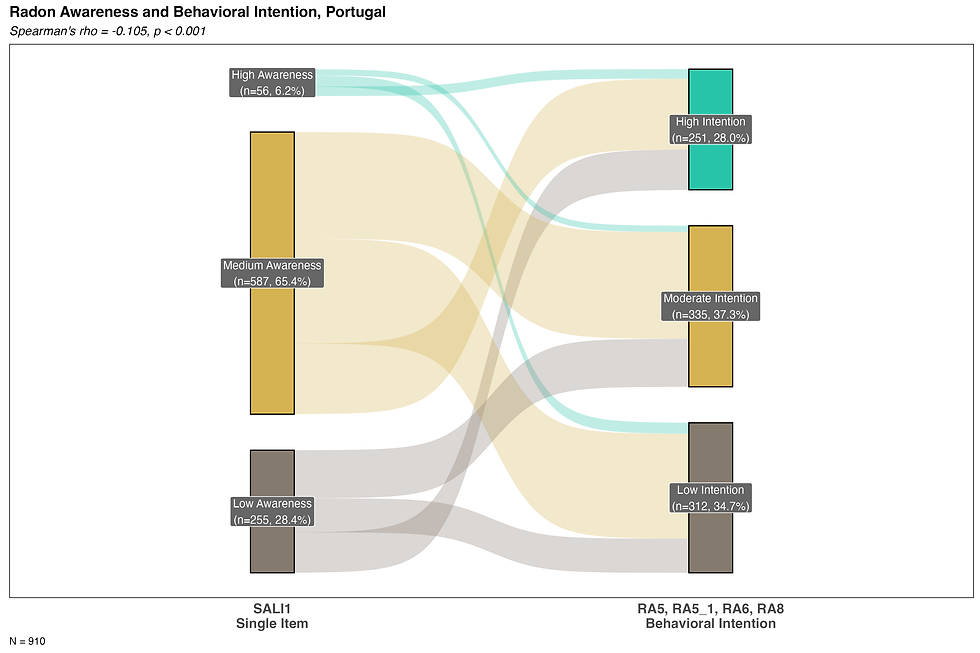
Anticipated emotion

Risk perception

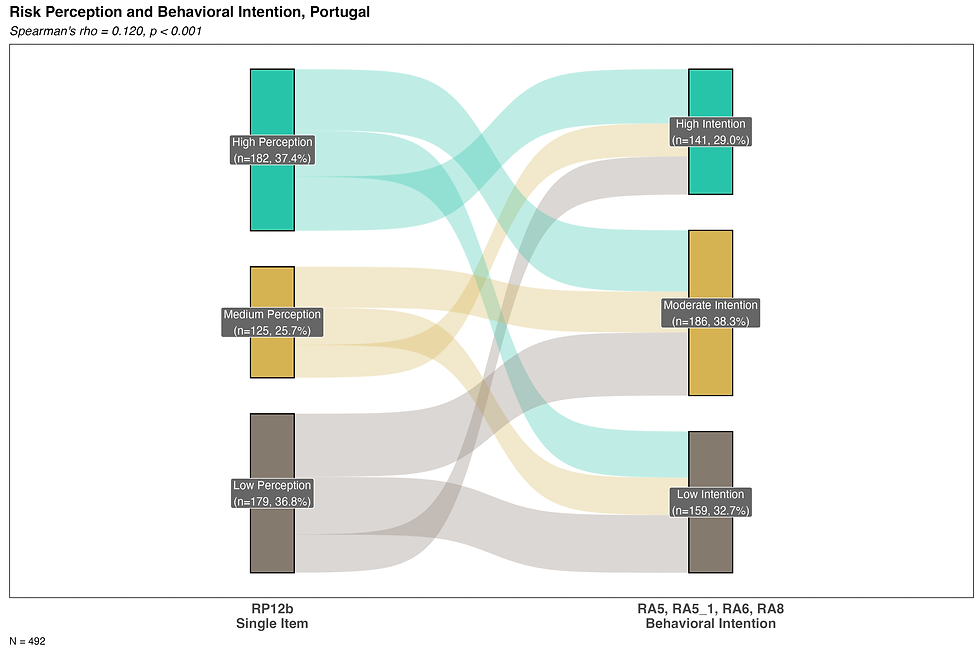
Confidence in authorities for risk management

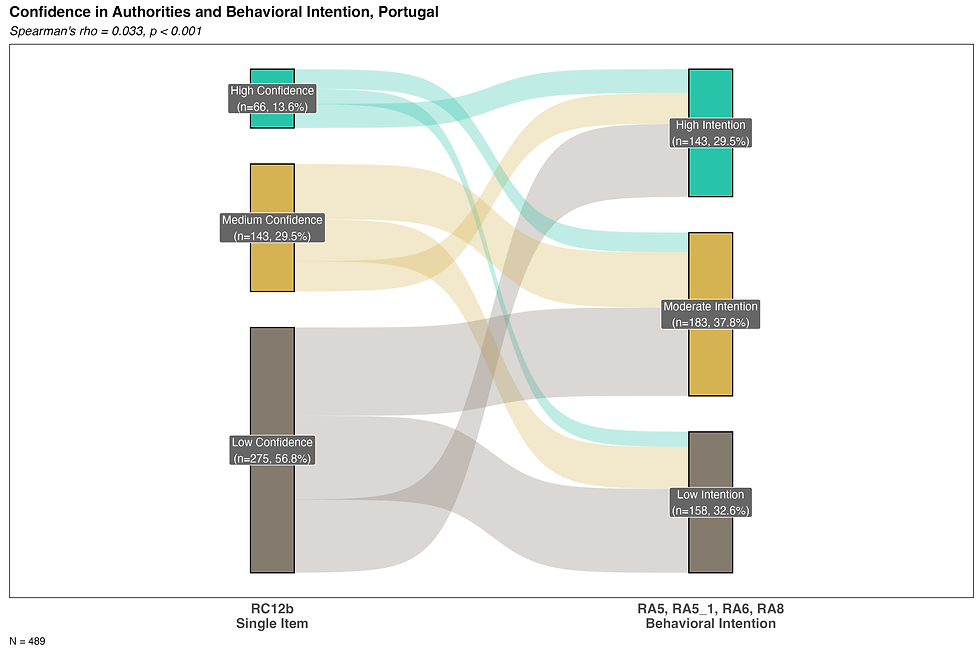
Severity

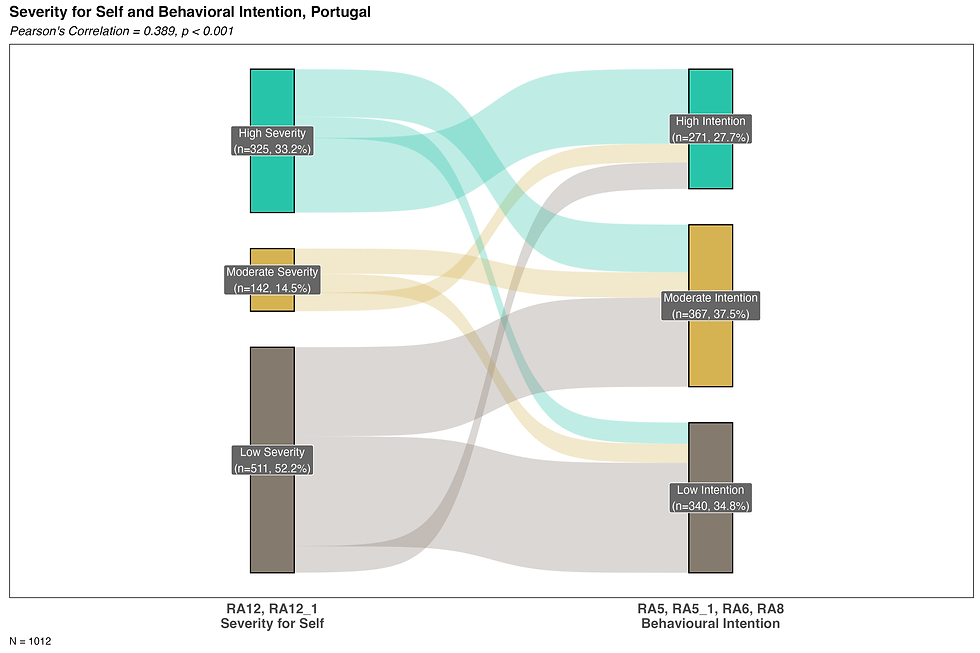
Susceptibility
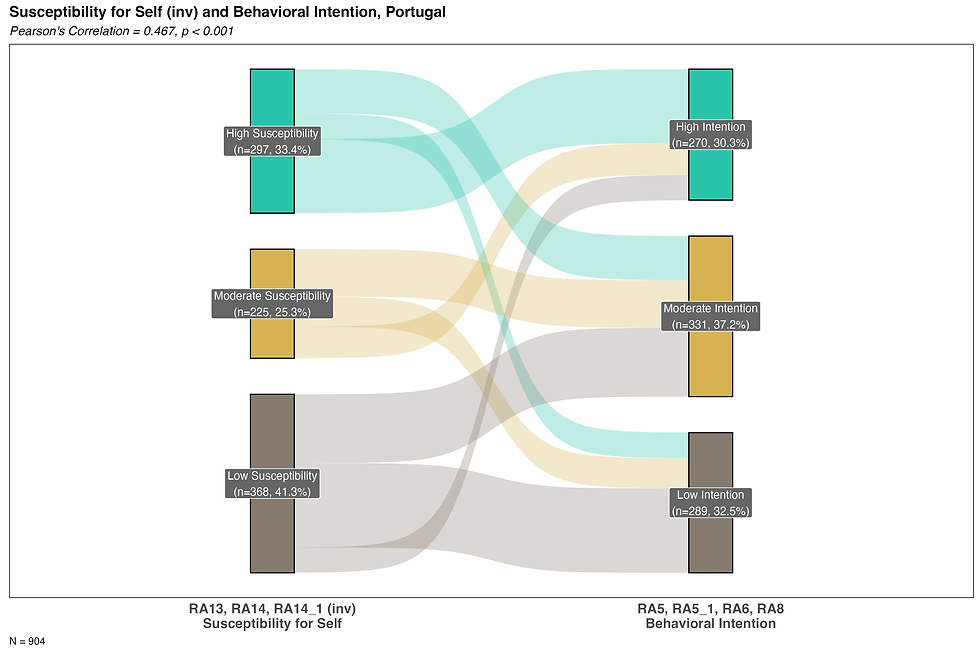

Response efficacy: remediation


Self efficacy



Perceived behavioural control: financial and other burden and ease

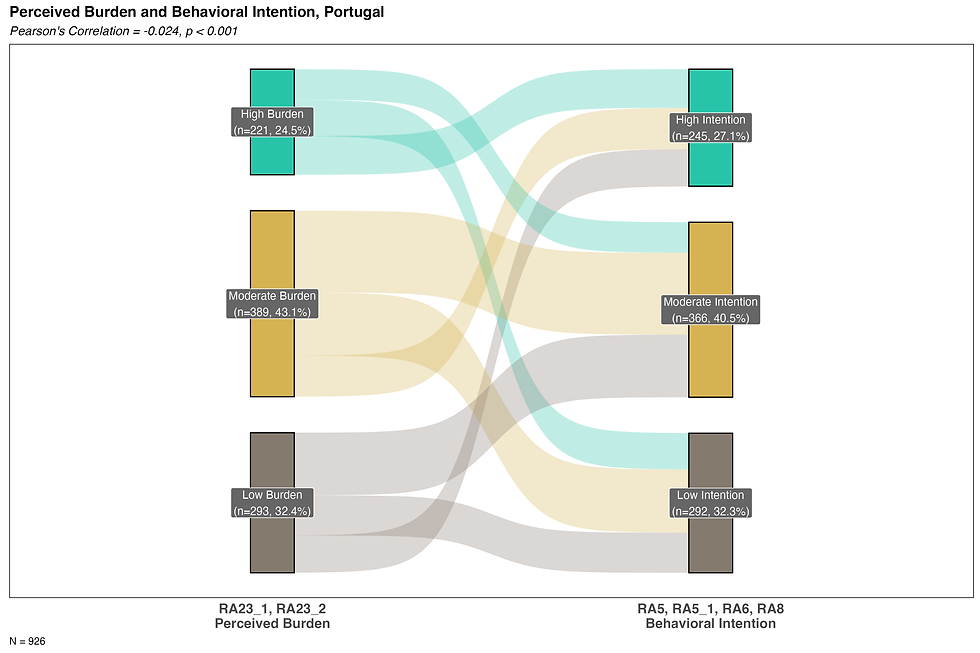
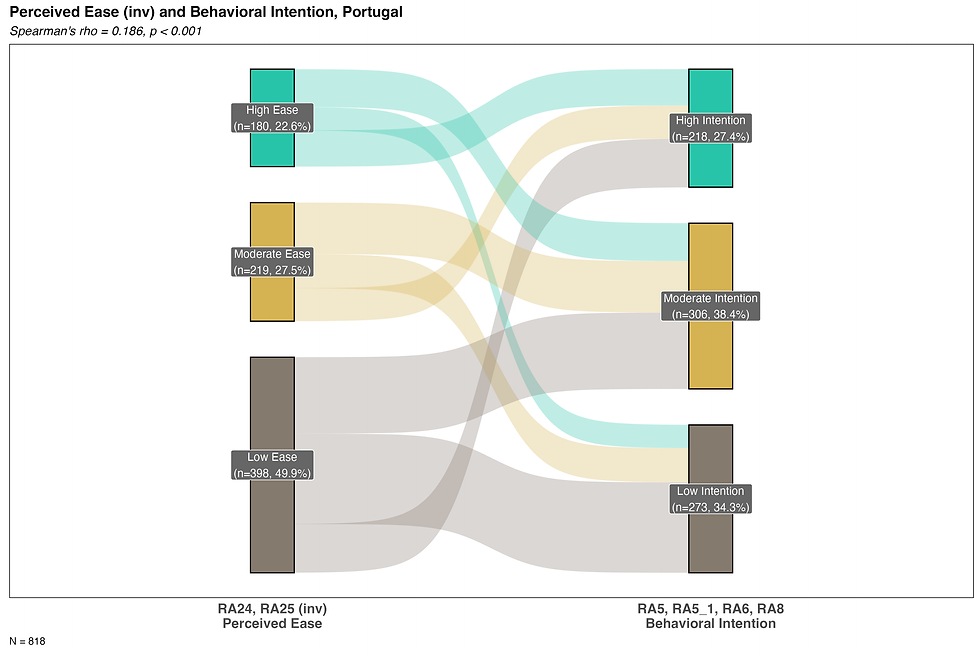
Perceived cost



Aesthetic impact of remediation works on a dwelling

Economic impact of radon on a property value

Subjective norms

Descriptive norms
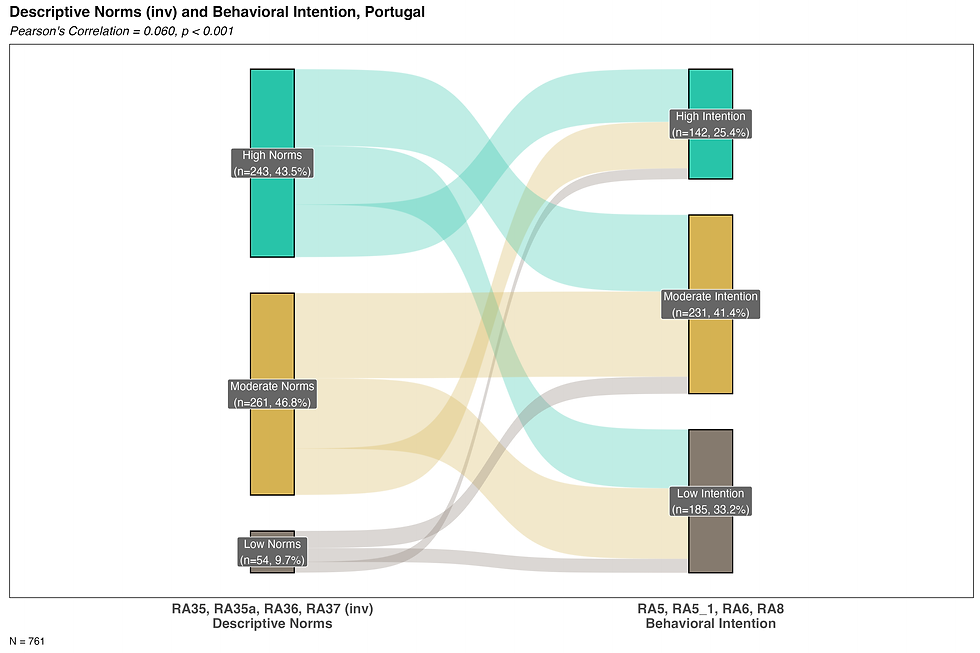
Moral norms

Moral values

Social influence

Health effect perception

Stigma

Information processing



Information comprehensiveness

Information uncertainty

Affective response to information

Relationship Between Radon Awareness and Behavioural Intention to Act on Radon Risk
